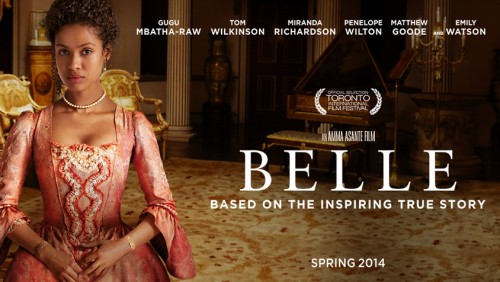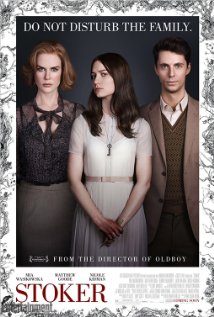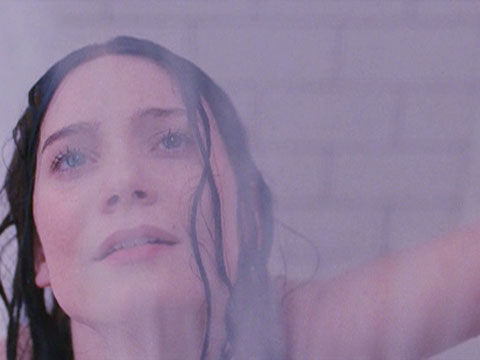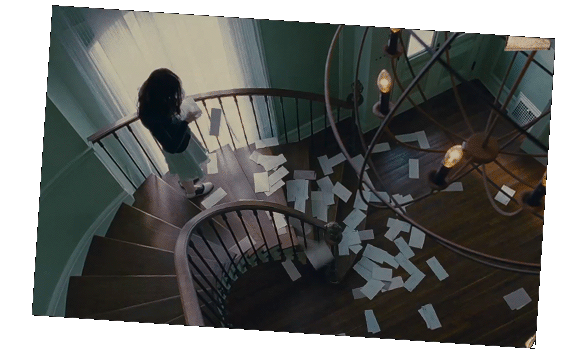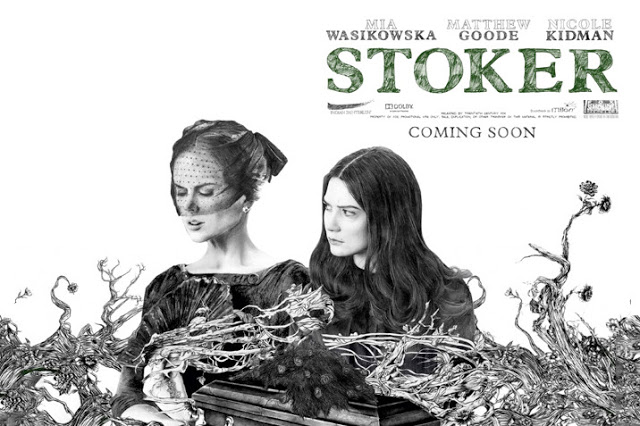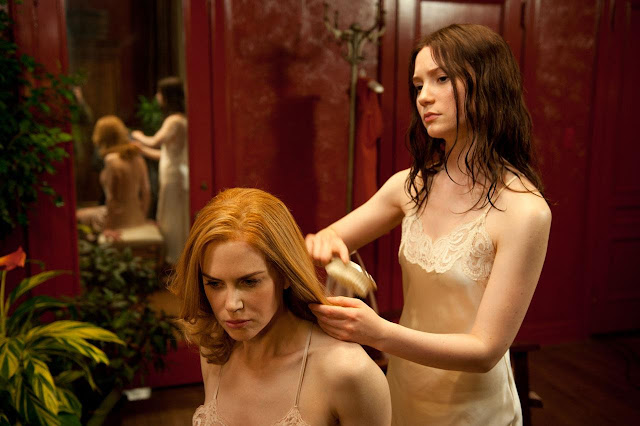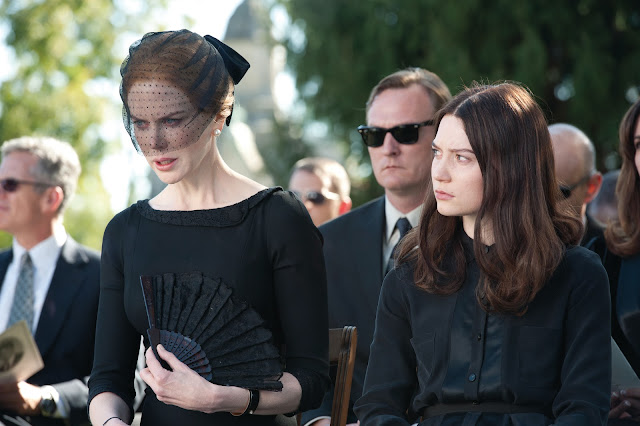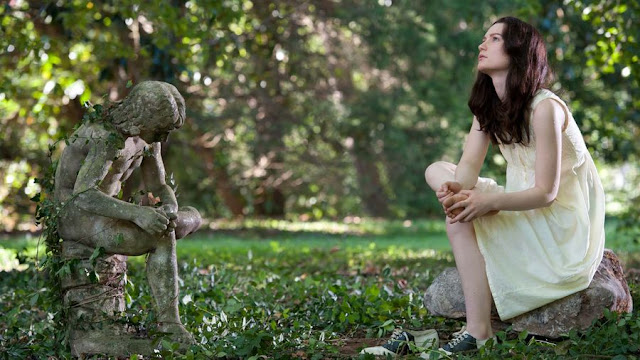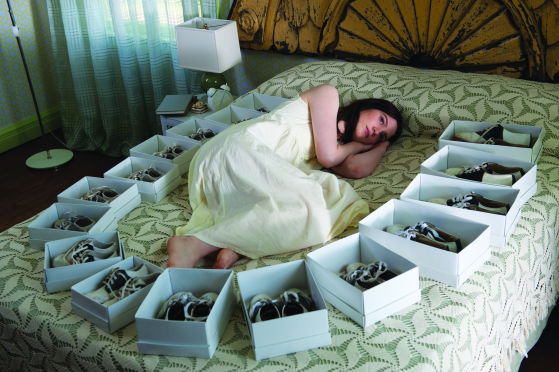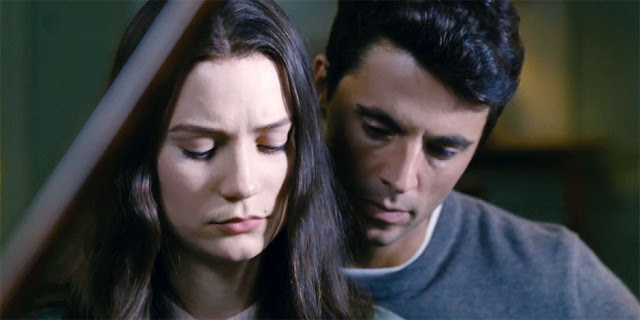
This guest post by Laura Shamas, PhD, previously appeared at Huffington Post and is cross-posted with permission.
What does it mean in a young woman’s life to be constantly stared at and treated as “the Other”? Belle, directed by Amma Asante and written by Misan Sagay, has a lush, gorgeous look from the costumes to the landscape, and throughout this new film we, too, are invited to “look,” and to understand that “the dominant white male gaze” is related to power in 18th-century England. An actual 1779 portrait currently hanging in Scone Palace, Scotland, credited to artist Johann Zoffany, is at the heart of the complex Belle, as is the issue of race.
The film is based on the true story of Dido Elizabeth Belle (poignantly played by Mugu Mbatha-Raw), the illegitimate mixed race child of Captain Sir John Lindsay (Matthew Goode) and a woman named Maria Belle; her parents met on a Spanish slave ship. Dido’s mother dies before the story begins. The opening images of the film depict a child in a cloak in the shadows, a carriage ride on a rough road in England in the 1700’s, and then, the emergence of Captain Sir John Lindsay, who’s come to claim Belle as his daughter. But he’s unable to raise her, as he must sail away with the Royal Navy. He brings Dido to Kenwood House in Hampstead, the home of his aristocratic uncle, Lord Mansfield (sensitively portrayed by Tom Wilkinson), who is the Lord Chief Justice of England. He leaves Dido in the care of the Mansfields, but before Lindsay departs, he assures the girl that she is loved.
The pastoral Mansfield estate already has a young blonde charge on the premises: Lady Elizabeth Murray (Sarah Gadon plays the older Elizabeth), whose own father abandoned her while he’s moved on to Europe. The young Elizabeth and Dido become inseparable, and as “cousin-sisters” grow up doing everything together: frolicking in the grass, sharing a bedroom, studying music, letters, French, and eventually, the proper mores of society as taught by their watchful aunts, Lady Mansfield (Emily Watson) and Lady Mary Murray (Penelope Wilton). The Mansfields themselves are childless, and truly love their great-nieces. The two girls are raised on relatively equal footing in the home, with some notable exceptions. For example, when visitors come, Dido is not allowed to dine with them, due to being born out of wedlock. She is, however, able to meet and greet guests after dinner in the parlor.
The news of Captain Lindsay’s eventual death is delivered by letter; Dido becomes an heiress, afforded an sizable annuity, and therefore, is set financially for life; this is in direct contrast to Elizabeth, who has no dowry and must marry well, much as in a Jane Austen novel, in order to maintain the standards of her upbringing and lineage.
When male visitors do eventually arrive for dinner at Kenwood House, such as potential suitors James Ashford (Tom Felton) and his brother Oliver (James Norton), they stare and whisper in asides, sizing up “the mulatto”; director Asante aptly depicts the 18th-century concept of women as objects here. In a later carriage scene, Elizabeth directly expresses to Dido that choices facing them, as women, are depressingly limited; they are unable to work, and a good marriage seems to be their only hope for the future.
The motif of “looking” is emphasized further in other sequences in the film. There’s a very touching scene of Dido staring at herself in the mirror, and clawing, in agony, at her own skin, trying to come to terms with her own identity.
But when a painter is commissioned for a family portrait of the two girls, there are several separate shots of Dido holding a pose, gazed upon by not only the painter, but surreptitiously spied upon by another potential suitor, the budding abolitionist John Davinier (Sam Reid).
The film points to the multiple meanings of “gazing” at Dido: yes, due to her remarkable female beauty, as in the title, but also because she is “the Other” in 18th-century British society: aristocratic, educated, and biracial. In one scene, this is especially highlighted. Both Elizabeth and Dido are asked to play the piano for the Ashfords during their first visit to Kenwood House. Lady Ashford (Miranda Richardson) doubts that Dido will be able to play at all. But it is Dido who, between the two girls, is the more accomplished musician. In a later scene, the objectification of Dido in British society is more dire, as misogynistic James Ashford, who once called beautiful Dido “repulsive,” stares at her on a river bank, and then assaults her.
Mabel (Bethan Mary-James), the freed servant in the Mansfield’s London home, is another character connected to “looking.” Dido and Mabel stare at each other upon meeting, a recognition of their shared heritage — and yet their different positions in society. Later, in front of a mirror, Mabel shows Dido how to comb through her hair properly, starting with the ends first. Mabel tells Dido that a man first showed her how to do it.
Courtship becomes a major crucible in the film. Who will get a viable marriage proposal? Dido’s first proposal occurs under the watchful eye of a marble statue of Aphrodite in a bathing pose, seeming to imply it’s a love match. But later, the romance falls apart. Earlier, Lord Mansfield tried to entrust the keys of the house to Dido, offering her the honored place that her spinster Aunt Mary holds — a Hestia position as household caretaker. Hestia is the virginal domestic Greek goddess of the hearth who never leaves home. Worried about her future, Lord Mansfield implies that Dido won’t be able to make a suitable marriage match, due to her liminal societal position: her ethnicity combined with her aristocratic background. But his offer greatly disappoints Dido, and so we know that a romance is in her future; she chooses the way of Aphrodite, not Hestia.
Classism and racism are key parts of a secondary parallel plot involving Lord Mansfield, who must render a judgment on the horrible Zong massacre of 1781, about insurers and the deaths of 142 slaves on a cargo ship. Davinier becomes secretly allied with Dido here, trying to convince Lord Mansfield to rule against the ship’s crew, in favor of the insurers. Although there are several points in the film that seem anachronistic, as if twenty-century sensibilities are in motion instead of the more likely constraints of the time period, it is Dido’s agency in this later part of the film that seems most modern, and perhaps unlikely. Still, it gives Dido an important activist goal, and the two plotlines come together well in the end: Dido’s ability to decide her own future, the verdict in the Zong trial, and romance.
The famous Zoffany portrait of the girls is revealed in the end, highlighting the focus on its unusual qualities: a handsomely gowned, pearl-wearing young black woman touched by a well-dressed white woman, given equal center space at eye line level. In the film, Asante has shown us other pictures of the era, where Africans in paintings are given little space, infantilized, or enslaved, depicted as property. The impact of the independent spirit of Dido in the painting, and the equality in stature of the two girls in the portrait, is evocative and satisfying. Director Asante again reminds us of the motif of looking, gazing, as we ourselves finally stare at the family portrait that our heroine dutifully posed for at Kenwood. And instead of Dido merely seated, she’s smiling and in motion. Symbolically, and in contrast to Elizabeth, she is going somewhere. The theme of “looking,” or gazing upon from a position of privilege as related to objectification, is explored thoroughly in Belle. The film challenges us: what do you really see and why do you see it?
